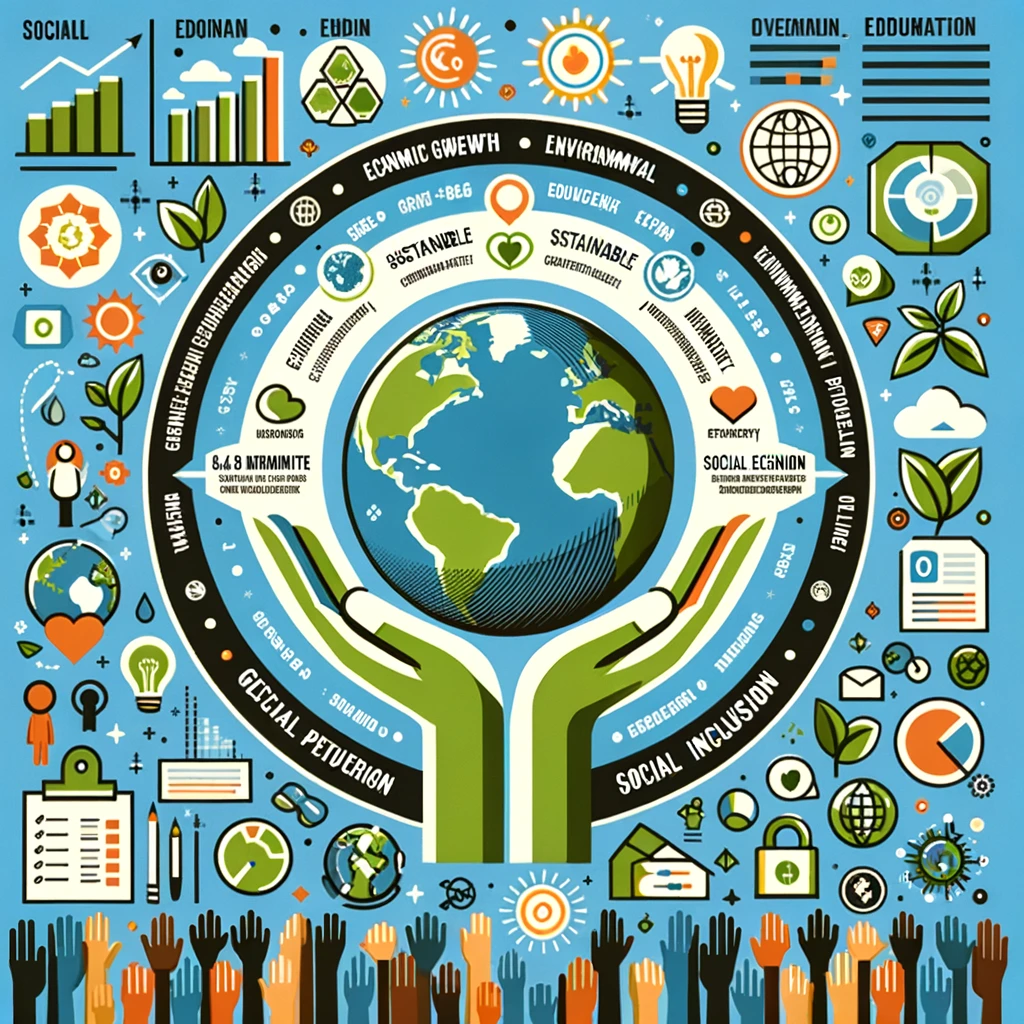
Understanding Sustainable Development: Balancing Economic Growth, Environmental Protection, and Social Inclusion

Explain the concept of sustainable development.
Sustainable development is a holistic approach to growth and development that seeks to meet the needs of the present without compromising the ability of future generations to meet their own needs. This concept integrates three core elements: economic growth, environmental stewardship, and social inclusion, aiming for a balanced approach to achieving long-term prosperity for both people and the planet.
Key Aspects of Sustainable Development:
- Economic Growth: Sustainable development advocates for growth that is inclusive and equitable, providing opportunities for all segments of society, reducing poverty, and ensuring that economic activities do not deplete natural resources beyond their capacity to regenerate.
- Environmental Protection: It emphasizes the need to conserve natural resources and ecosystems, promoting practices that reduce pollution, enhance energy efficiency, and maintain biodiversity. This includes actions to combat climate change by reducing greenhouse gas emissions and adapting to its impacts.
- Social Inclusion: Sustainable development seeks to ensure social equity, providing access to basic necessities such as clean water, nutritious food, healthcare, education, and employment opportunities for everyone, regardless of gender, race, age, or socioeconomic status. It promotes participation in decision-making processes to ensure that development benefits are shared widely.
Principles of Sustainable Development:
- Interdependence: Recognizing the interconnectedness of economic, environmental, and social systems and ensuring that progress in one area does not negatively impact the others.
- Long-term Perspective: Focusing on long-term goals and consequences rather than short-term gains, ensuring that actions taken today do not hinder the opportunities for future generations.
- Inclusivity: Involving all stakeholders, including marginalized and vulnerable groups, in the development process to ensure that development is equitable and benefits are distributed fairly.
- Precautionary Principle: Acting cautiously when activities may cause environmental harm or social injustice, even if some cause-and-effect relationships are not fully established scientifically.
Implementation:
Implementing sustainable development requires collaborative efforts across governments, businesses, civil society, and individuals. Strategies include adopting sustainable technologies, enforcing environmental regulations, promoting renewable energy, investing in education and health, and encouraging sustainable consumption and production patterns.
International frameworks such as the United Nations’ Sustainable Development Goals (SDGs) offer a roadmap for achieving sustainable development globally, addressing challenges such as poverty, inequality, climate change, environmental degradation, peace, and justice.
In summary, sustainable development is about finding better ways of doing things, both for the present and for the future. It is an ongoing process of improving the quality of human life while living within the carrying capacity of the Earth’s supporting ecosystems.